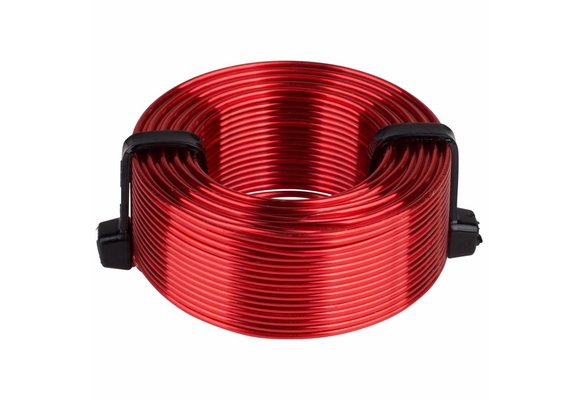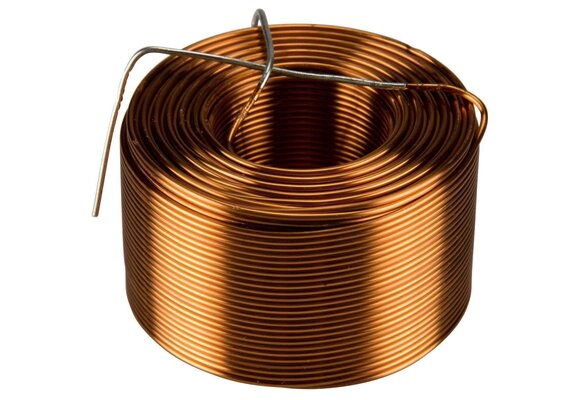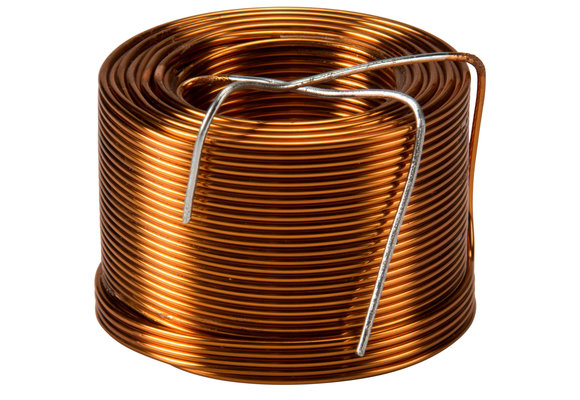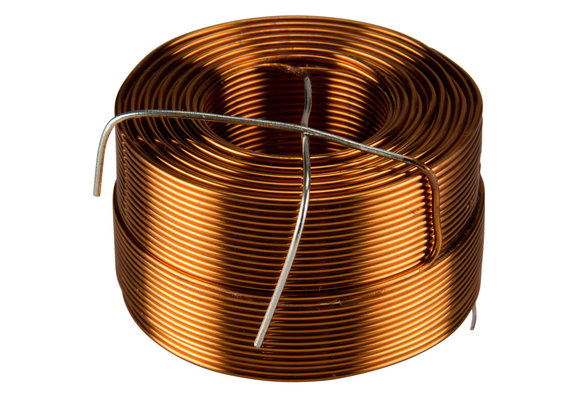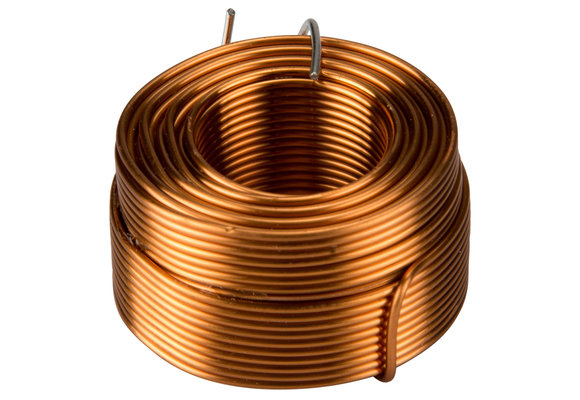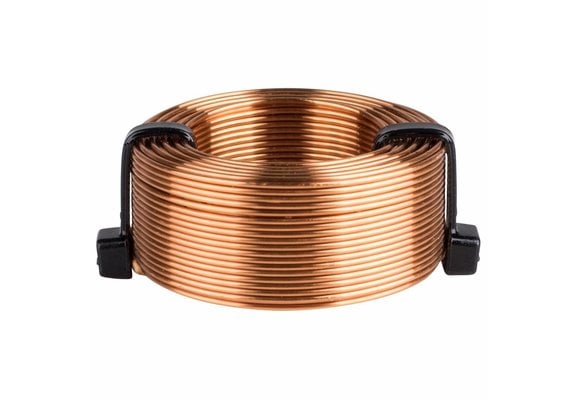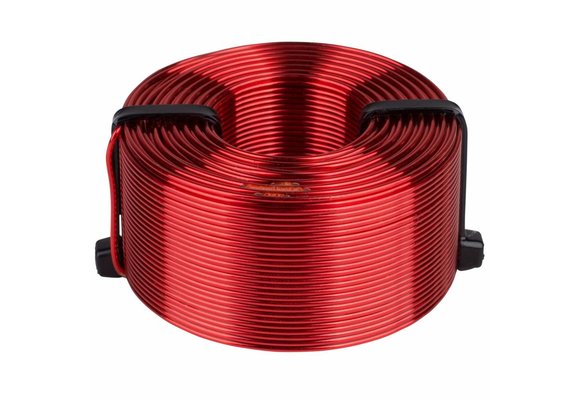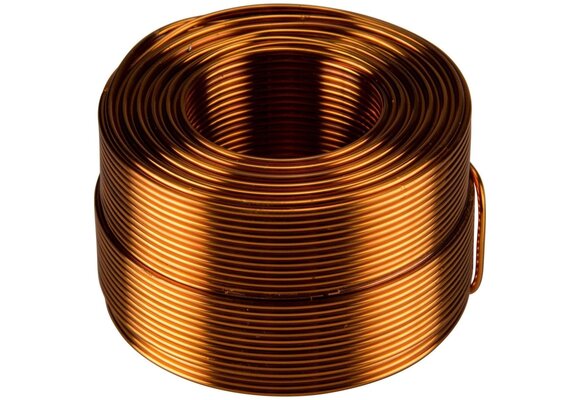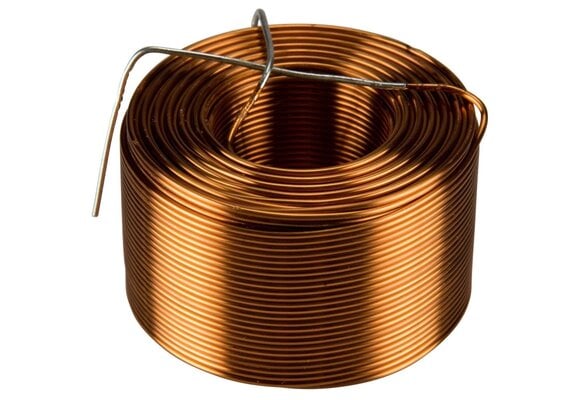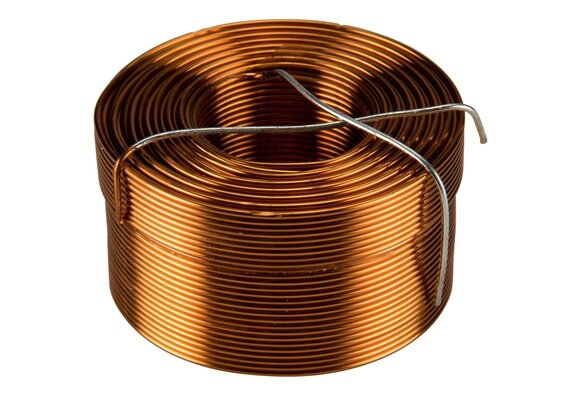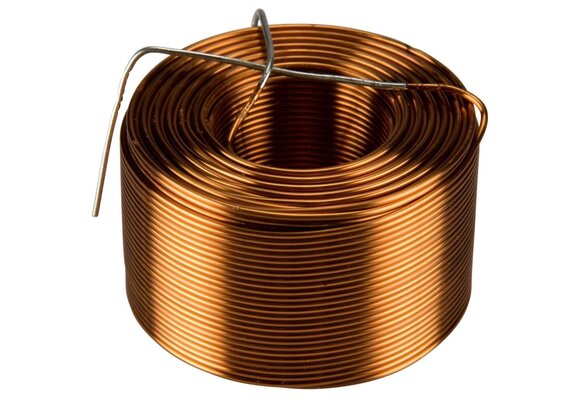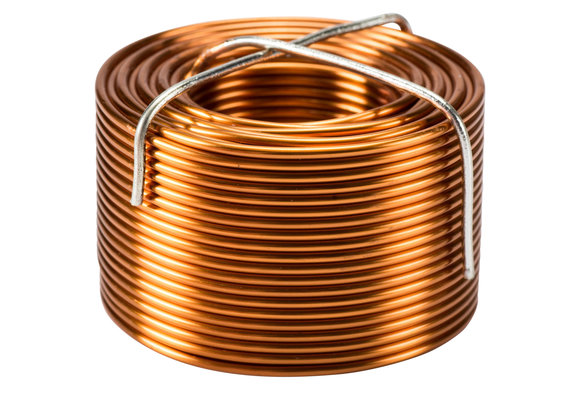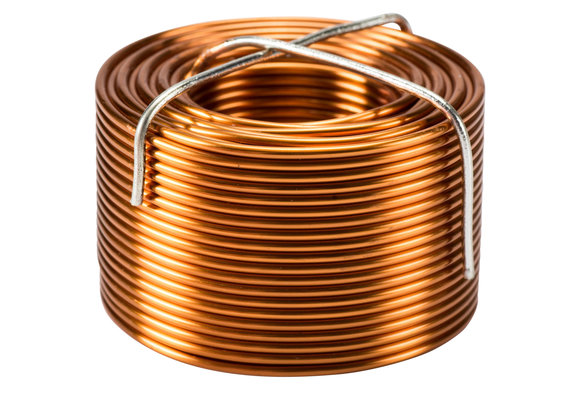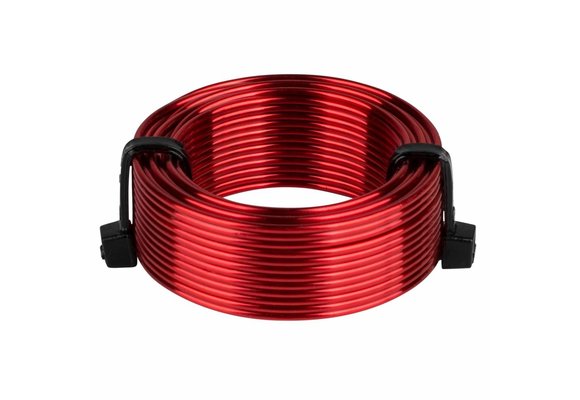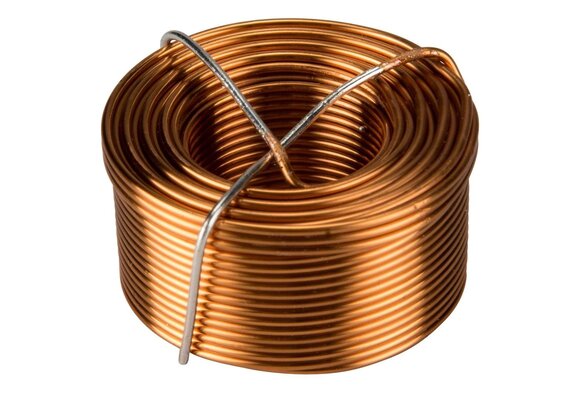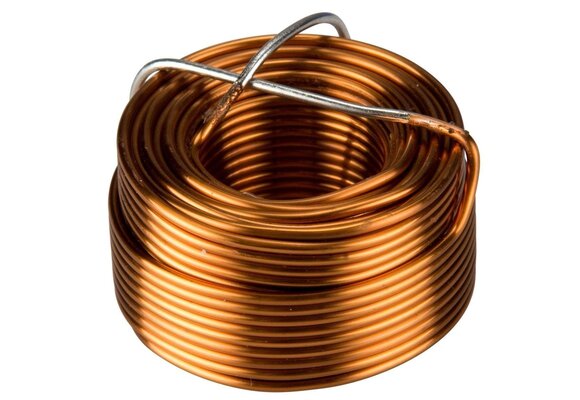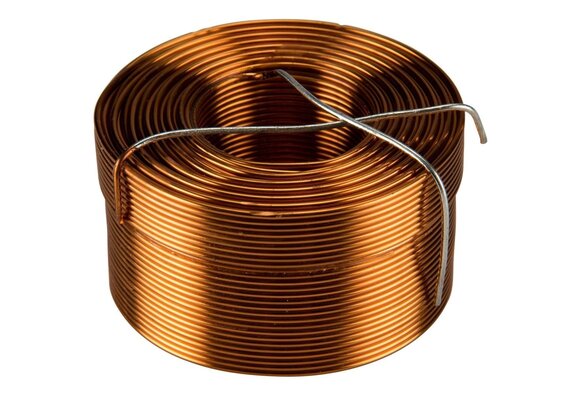Air core coils are suitable for passive crossover networks that do not need a ferromagnetic material to meet their inductance parameters. They are, for physical reasons, superior to all metal-core coils, such as ferrite core coils, copper foil coils or iron core coils as far as accurate pulse reproduction and freedom from distortion are concerned. Precision, dynamic, subtle tonal gradations, incredible detail, and liveliness distinguish air core coils with from all others. Modern self-supporting design, low inductance tolerance of +/-3%, and power handling depending on the wire used to make it the most versatile coil on the market.
Here at SoundImports, you can buy air-core coils out of high-quality copper wire from known brands such as Dayton Audio, Jantzen Audio and Mundorf!
Where are air core coils used?
Air core coils can be used in various applications, such as a middle-frequency high-pass filter, a bass coil (with a broad conductor cross-section), and part correction (with thin wire cross-section). They are, therefore, the foundation for practical and harmonic musical experience in high-quality speakers.
What are the advantages of an air-core coil?
The current it holds has little effect on its inductance. The inductance of ferromagnetic core coils, on the other hand, begins to increase at low field strengths until decreasing to zero as saturation reaches. In some cases, such as switching converters, non-linearity in the magnetization curve can be accepted. However, in circuits such as audio cross over networks in hi-fi speaker systems, distortion must be avoided. Therefore, an air-core coil is needed — this is also why most radio transmitters use air coils to stop the creation of harmonics.
Also, 'Iron losses,' which damage ferromagnetic cores, are absent in air coils. As the frequency has increased, this advantage becomes progressively more important. One obtains a better Q-factor, greater efficiency, more excellent power handling, and less distortion.
Feeling like learning more about inductors, capacitors and/or crossover components in general? If so, please check out our blog post!

 Home audio
Home audio  Audio components
Audio components  Crossover components
Crossover components  Test & measurement
Test & measurement  DIY kits
DIY kits  Accessories
Accessories  New products
New products  Speakers
Speakers Amplifiers
Amplifiers DAC converters
DAC converters DSP modules
DSP modules Turntables
Turntables Streamers
Streamers Woofers
Woofers Tweeters
Tweeters Exciters
Exciters Bass shakers
Bass shakers Plate amplifiers
Plate amplifiers Amplifier modules
Amplifier modules Single board computers
Single board computers Assembled crossovers
Assembled crossovers Printed Circuit Boards (PCB)
Printed Circuit Boards (PCB) Capacitors
Capacitors Resistors
Resistors Coils
Coils Circuit Breakers
Circuit Breakers Crossover tools
Crossover tools Screw terminals
Screw terminals Acoustic measurements
Acoustic measurements Electric measurements
Electric measurements Sound level meters
Sound level meters DIY amplifier kits
DIY amplifier kits DIY component packs
DIY component packs DIY speaker kit
DIY speaker kit DIY subwoofer kits
DIY subwoofer kits DIY bluetooth speaker
DIY bluetooth speaker DIY electronics kits
DIY electronics kits Binding posts
Binding posts Cabinet Hardware
Cabinet Hardware Cables
Cables Connectors
Connectors Speaker cabinets
Speaker cabinets Electromechanics
Electromechanics Power supplies
Power supplies Speaker repair
Speaker repair Workshop & tools
Workshop & tools Amplifier accessories
Amplifier accessories Stands & mounts
Stands & mounts Gift voucher
Gift voucher Books
Books New products
New products






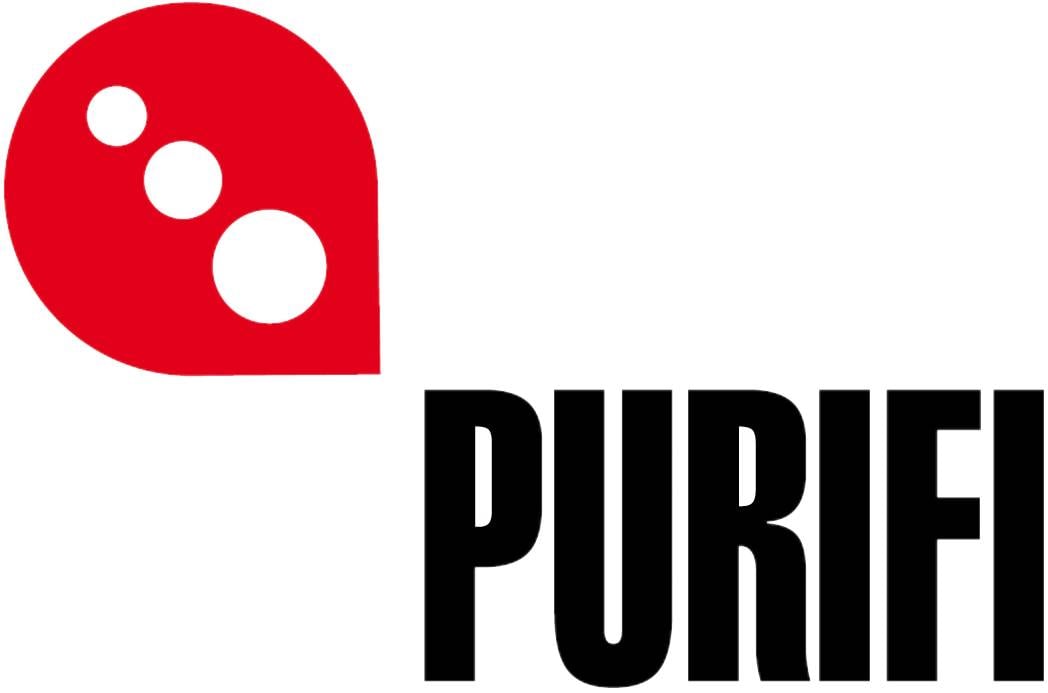


 Speakers
Speakers Amplifiers
Amplifiers DAC converters
DAC converters DSP modules
DSP modules Turntables
Turntables Streamers
Streamers Woofers
Woofers Tweeters
Tweeters Exciters
Exciters Bass shakers
Bass shakers Plate amplifiers
Plate amplifiers Amplifier modules
Amplifier modules Single board computers
Single board computers Assembled crossovers
Assembled crossovers Printed Circuit Boards (PCB)
Printed Circuit Boards (PCB) Capacitors
Capacitors Resistors
Resistors Coils
Coils Circuit Breakers
Circuit Breakers Crossover tools
Crossover tools Screw terminals
Screw terminals Acoustic measurements
Acoustic measurements Electric measurements
Electric measurements Sound level meters
Sound level meters DIY amplifier kits
DIY amplifier kits DIY component packs
DIY component packs DIY speaker kit
DIY speaker kit DIY subwoofer kits
DIY subwoofer kits DIY bluetooth speaker
DIY bluetooth speaker DIY electronics kits
DIY electronics kits Binding posts
Binding posts Cabinet Hardware
Cabinet Hardware Cables
Cables Connectors
Connectors Speaker cabinets
Speaker cabinets Electromechanics
Electromechanics Power supplies
Power supplies Speaker repair
Speaker repair Workshop & tools
Workshop & tools Amplifier accessories
Amplifier accessories Stands & mounts
Stands & mounts Gift voucher
Gift voucher Books
Books New products
New products

